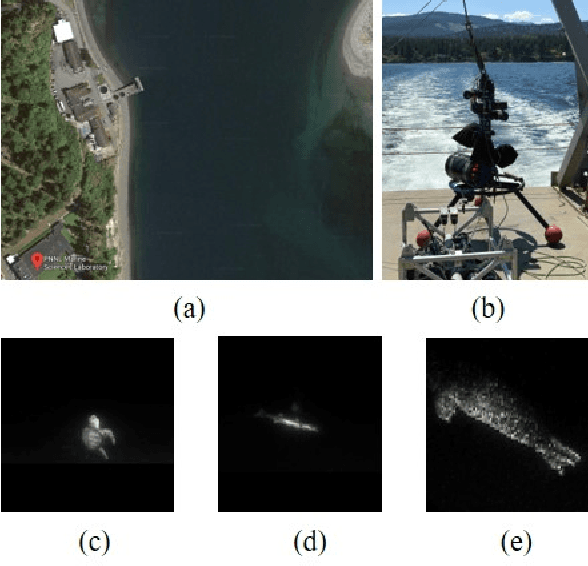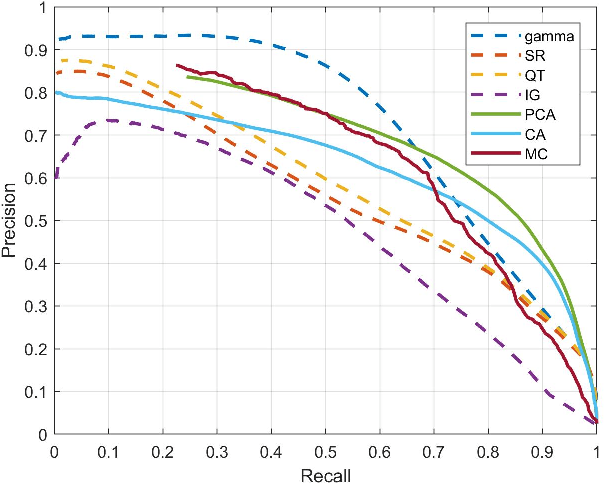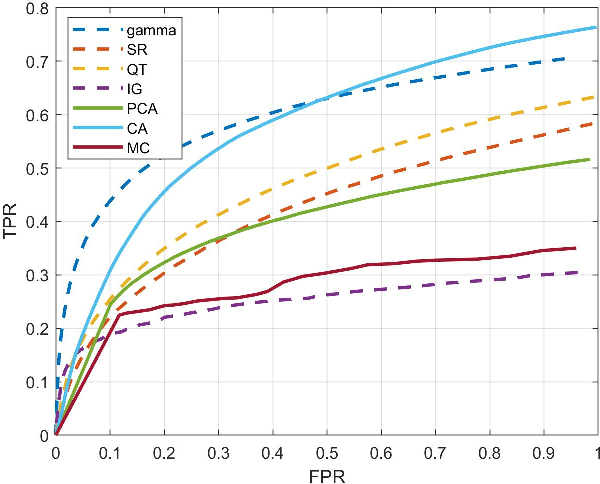Chi Ding
Sketch-1-to-3: One Single Sketch to 3D Detailed Face Reconstruction
Feb 25, 2025Abstract:3D face reconstruction from a single sketch is a critical yet underexplored task with significant practical applications. The primary challenges stem from the substantial modality gap between 2D sketches and 3D facial structures, including: (1) accurately extracting facial keypoints from 2D sketches; (2) preserving diverse facial expressions and fine-grained texture details; and (3) training a high-performing model with limited data. In this paper, we propose Sketch-1-to-3, a novel framework for realistic 3D face reconstruction from a single sketch, to address these challenges. Specifically, we first introduce the Geometric Contour and Texture Detail (GCTD) module, which enhances the extraction of geometric contours and texture details from facial sketches. Additionally, we design a deep learning architecture with a domain adaptation module and a tailored loss function to align sketches with the 3D facial space, enabling high-fidelity expression and texture reconstruction. To facilitate evaluation and further research, we construct SketchFaces, a real hand-drawn facial sketch dataset, and Syn-SketchFaces, a synthetic facial sketch dataset. Extensive experiments demonstrate that Sketch-1-to-3 achieves state-of-the-art performance in sketch-based 3D face reconstruction.
LAMA: Stable Dual-Domain Deep Reconstruction For Sparse-View CT
Oct 28, 2024



Abstract:Inverse problems arise in many applications, especially tomographic imaging. We develop a Learned Alternating Minimization Algorithm (LAMA) to solve such problems via two-block optimization by synergizing data-driven and classical techniques with proven convergence. LAMA is naturally induced by a variational model with learnable regularizers in both data and image domains, parameterized as composite functions of neural networks trained with domain-specific data. We allow these regularizers to be nonconvex and nonsmooth to extract features from data effectively. We minimize the overall objective function using Nesterov's smoothing technique and residual learning architecture. It is demonstrated that LAMA reduces network complexity, improves memory efficiency, and enhances reconstruction accuracy, stability, and interpretability. Extensive experiments show that LAMA significantly outperforms state-of-the-art methods on popular benchmark datasets for Computed Tomography.
Fast Deep Predictive Coding Networks for Videos Feature Extraction without Labels
Sep 08, 2024Abstract:Brain-inspired deep predictive coding networks (DPCNs) effectively model and capture video features through a bi-directional information flow, even without labels. They are based on an overcomplete description of video scenes, and one of the bottlenecks has been the lack of effective sparsification techniques to find discriminative and robust dictionaries. FISTA has been the best alternative. This paper proposes a DPCN with a fast inference of internal model variables (states and causes) that achieves high sparsity and accuracy of feature clustering. The proposed unsupervised learning procedure, inspired by adaptive dynamic programming with a majorization-minimization framework, and its convergence are rigorously analyzed. Experiments in the data sets CIFAR-10, Super Mario Bros video game, and Coil-100 validate the approach, which outperforms previous versions of DPCNs on learning rate, sparsity ratio, and feature clustering accuracy. Because of DCPN's solid foundation and explainability, this advance opens the door for general applications in object recognition in video without labels.
Learned Alternating Minimization Algorithm for Dual-domain Sparse-View CT Reconstruction
Jun 06, 2023Abstract:We propose a novel Learned Alternating Minimization Algorithm (LAMA) for dual-domain sparse-view CT image reconstruction. LAMA is naturally induced by a variational model for CT reconstruction with learnable nonsmooth nonconvex regularizers, which are parameterized as composite functions of deep networks in both image and sinogram domains. To minimize the objective of the model, we incorporate the smoothing technique and residual learning architecture into the design of LAMA. We show that LAMA substantially reduces network complexity, improves memory efficiency and reconstruction accuracy, and is provably convergent for reliable reconstructions. Extensive numerical experiments demonstrate that LAMA outperforms existing methods by a wide margin on multiple benchmark CT datasets.
Algorithmic Design and Implementation of Unobtrusive Multistatic Serial LiDAR Image
Nov 08, 2019



Abstract:To fully understand interactions between marine hydrokinetic (MHK) equipment and marine animals, a fast and effective monitoring system is required to capture relevant information whenever underwater animals appear. A new automated underwater imaging system composed of LiDAR (Light Detection and Ranging) imaging hardware and a scene understanding software module named Unobtrusive Multistatic Serial LiDAR Imager (UMSLI) to supervise the presence of animals near turbines. UMSLI integrates the front end LiDAR hardware and a series of software modules to achieve image preprocessing, detection, tracking, segmentation and classification in a hierarchical manner.
 Add to Chrome
Add to Chrome Add to Firefox
Add to Firefox Add to Edge
Add to Edge